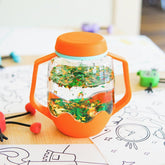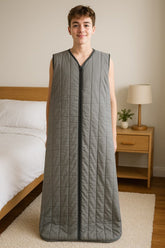Trending Now
Popular Products
Sensory Body Sock
- from £18.99 (£22.79 inc VAT)
- from £18.99 (£22.79 inc VAT)
- (-0%)
- Unit price
- / per
Glo Pals Sensory Jar
- £19.49 (£23.39 inc VAT)
- £19.49 (£23.39 inc VAT)
- (-0%)
- Unit price
- / per
-
Purple
-
Blue
-
Yellow
Fledglings Bodyworn Sleepsuit
- from £73.99
- from £73.99
- (-0%)
- Unit price
- / per
-
Grey
-
Blue
-
Pink
Need Help?
Email Us
- Black Friday 2025
- Black Friday 2025
- Black Friday 2025
- Christmas
- Clothing
- Swim
- Sensory & Activities
- Sensory & Activities
- All Sensory
- Activity Items
- Best Selling
- Guides & Advice
![]()
- Learning
- Daily Living
- Daily Living
- All In The Home
- Best Selling
- In The Home Guides & Support
![]()
- Toileting
- Bedtime
- Out & About
- Teens+
- Condition
- Brands
- Help
- Help
- Help
Dental Care Advice: Sensory-Friendly Brushing at Home
Daily toothbrushing can be tough when flavours, foams and mouth sensations feel overwhelming. With short, predictable steps and the right tools, home routines can be calmer and more successful.
Also see: Visiting the Dentist (appointments)
Safety note: If you notice dental pain, swelling, bleeding gums, new mouth sores, fever or trauma, contact your dentist, 111 or your clinician. This page offers general guidance only.
Who this can help
- Children and young people who dislike strong tastes or foaming toothpaste
- Those who gag easily or struggle to tolerate brushes in the mouth
- Families building a consistent morning/evening brushing routine
Quick wins
- Keep it short: start with 10–20 seconds and build up; stop while it’s going well.
- Predictable steps: same order, same words (“top → bottom → spit → done”).
- Show & mirror: child watches you first; then both brush together in a mirror.
- Less foam, less fight: use a small amount; consider unflavoured, low-foam paste.
- Timers help: visual or sand timers show “how long” without nagging.
Step-by-step brushing plan
- Prime: let the child touch the dry brush to lips/teeth; count 3 and stop.
- Add paste: a pea-sized amount (or smear for very young children) on the brush.
- Short sets: “top outside for 5 → pause → bottom outside for 5 → pause”. Build up slowly.
- Spit, don’t rinse: encourage spitting to keep fluoride working (follow your dentist’s advice).
- Finish routine: same positive cue every time (sticker, favourite song, high-five).
Taste, texture & brush tweaks
- Flavour: try unflavoured toothpaste if mint is aversive.
- Reach: an angled toothbrush can make back teeth easier with less stretch.
- Foam: less paste = less foam. Wipe excess from lips if that sensation is tricky.
- Temperature: some prefer the brush run under warm water first.
Desensitising & gag reflex
- Practise very short “touch and stop” on lips/teeth; gradually increase count over days.
- Start at the front teeth, then sides, then further back once tolerated.
- Try brushing with the head slightly down so excess foam drips out, not back.
Make it visual
- Use a simple picture schedule or checklist (e.g., brush → spit → wash hands → sticker).
- Place it where brushing happens; tick off steps together.
At school or clubs
- If brushing happens at school, share flavour/texture preferences and the agreed script (“top 5, bottom 5, spit, done”).
- Keep a labelled brush and paste in a sealed pouch; update staff if tolerances change.
Troubleshooting
- Refusal: shrink the step (touch brush to lips only), count 3, stop, praise.
- Gagging: pause immediately; return to front teeth only; increase slower next time.
- Bites the brush: model “open, count 3”; try a firmer head and shorter sets.
- Too foamy: use less paste; wipe lips; choose unflavoured/low-foam paste.
Products that can help
Keep choices simple; match to taste and reach.
- Oranurse Unflavoured Toothpaste — neutral taste for those who dislike mint or strong flavours.
- Dr Barman’s Superbrush (Children) — angled design that can help reach back teeth with less stretch.
- Visual timers — show “how long” without constant prompts.
Funding & budgets
- Potential funding options for families
- Digital catalogues to compare options by category
Need advice?
Email enquiries@fledglings.org.uk with age, flavour/texture preferences and what’s hardest right now (time, foam, gag). We’ll suggest options that fit your budget. We accept Purchase Orders. UK delivery from £4.99.
Support our work
Donate to Fledglings to help us keep advice free and prices fair.
Related
Last reviewed: 14 September 2025
- Choosing a selection results in a full page refresh.








